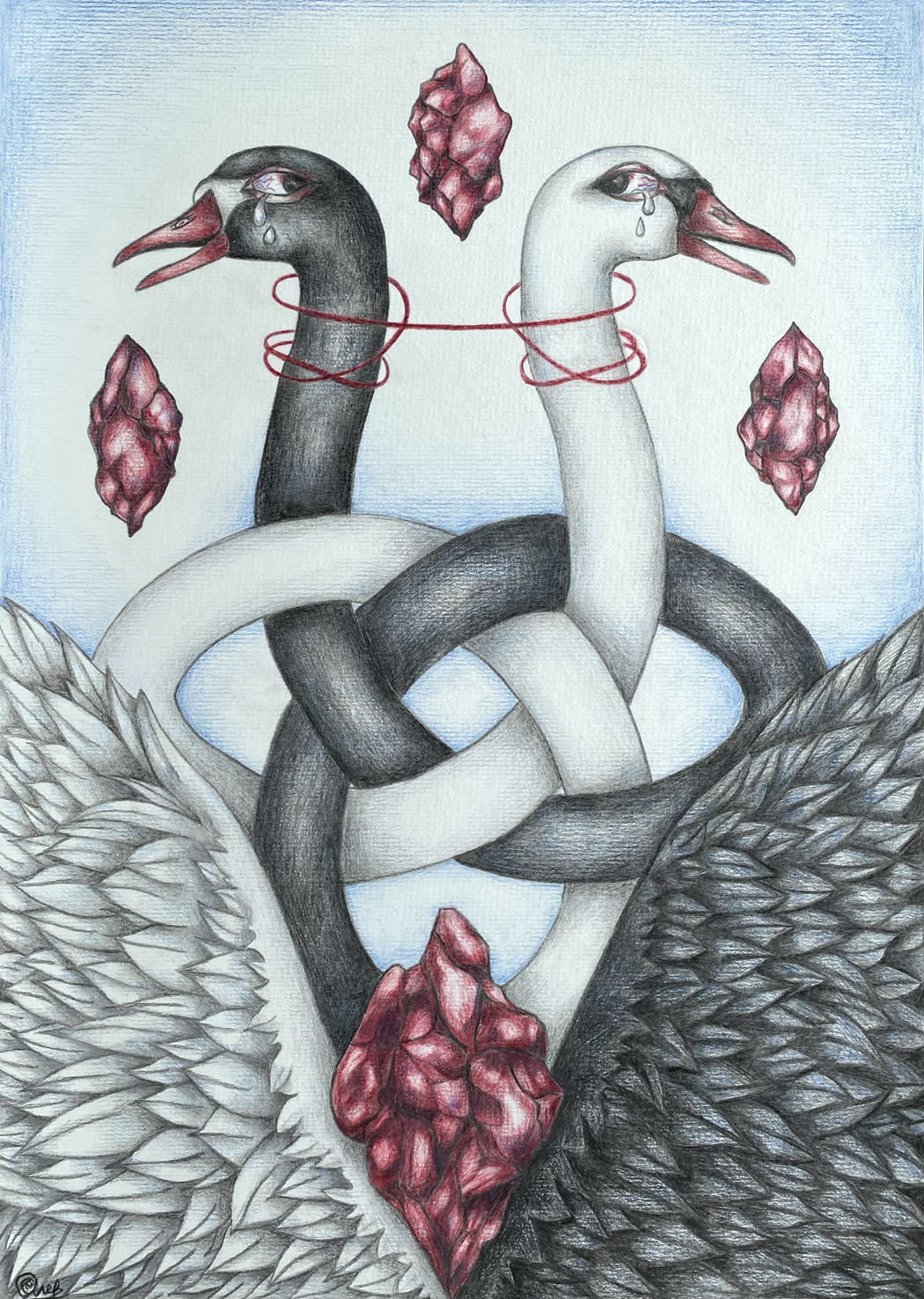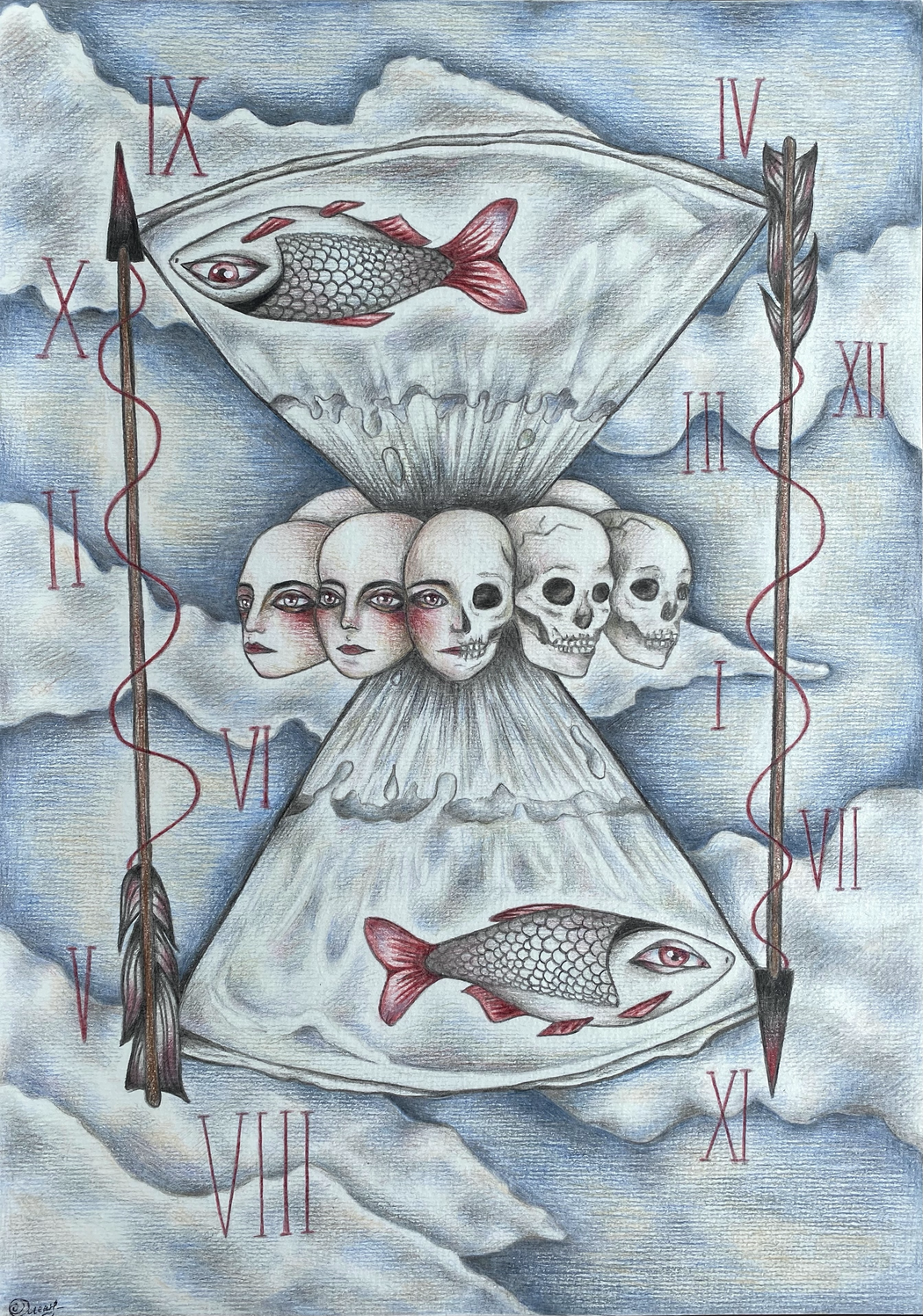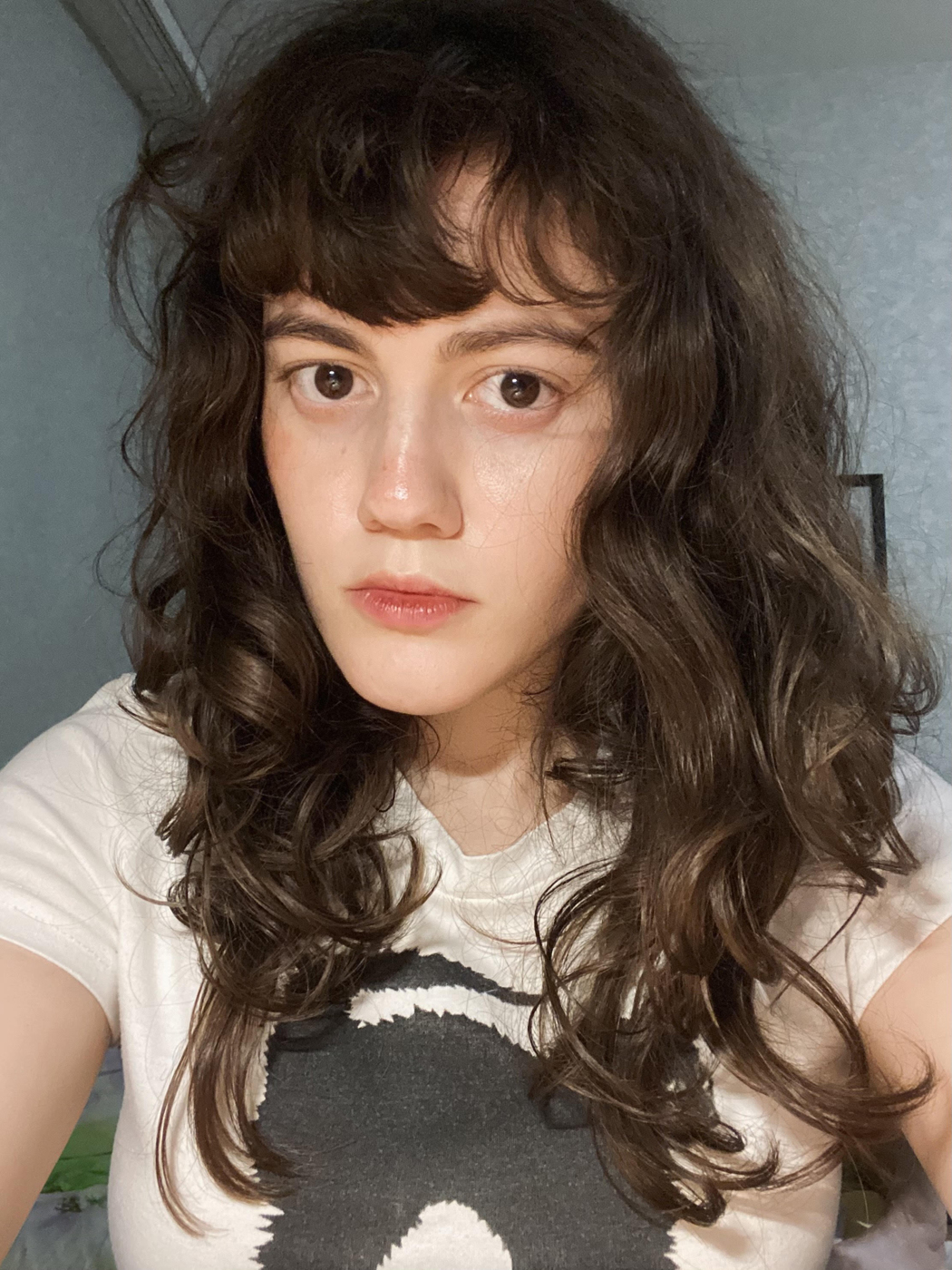Eva Oleandr
Describe your art in three words: Surreal, Symbolic, Mysterious
Your discipline: Multidiscipline
Your work blends anatomical elements with mythological symbolism and surreal imagery. What usually comes first in your creative process — a visual, a concept, or a feeling?
My creative process is quite simple, rooted in the natural flow of my thoughts. A visual and emotional spark usually comes first and inspires a concept. I tend to pull my ideas from everything that I find intriguing, such as philosophical arguments, and thus blend them together to forge new perspectives and even new realities. The world is truly fascinating and my inspiration; beautiful feelings, novel ideas, unique narratives can be found anywhere! Art is a powerful tool that can make anything possible for me.
How does your background in both Russian and UK cultures influence your visual language?
Studying and practicing art across both Russia and the UK has profoundly shaped my independent style of visual language. My Russian fine arts education was based on strict academic and traditional techniques, providing me with a solid foundation of technical skills and discipline. My UK art school experience embraced contemporary approaches that fostered creative freedom through exploration of self expression and personal growth. This combination of serious, intensive training with imaginative exploration has allowed me find my own artistic voice, the language spoken by my art, and to fall in love with art over and over again.
 Eva Oleandr | Attachment | 2025
Eva Oleandr | Attachment | 2025
The themes of duality, transformation, and time seem to appear throughout your artworks. Are there particular philosophical ideas or thinkers that have shaped your worldview?
Duality, transformation and time are fundamental and inseparable aspects of existence, shaping the very fabric of our perceived reality. However, I have always been deeply curious about questioning the what, why, and how of our shaped human existence. All these questions always remain open-ended, nothing is right or wrong, with countless theories ranging from something as simple as one’s personal reflections to global, widespread beliefs. This dialogue is an endlessly fascinating landscape which I seek to continue journeying through. So, I’m certainly interested in metaphysics and ontology in particular. I have an affinity for Ancient Greek philosophy, particularly Socrates and Plato. In more contemporary thought, I’m interested in ontological design (A.M. Willis), which is a design and art philosophy that explores how our creations shape us, the human beings; in return, just like M.C. Esher’s artwork “Hands.” I also admire T. Fry’s work, which explores existence and interconnectedness of everything through art and design.
Recently, I’ve been exploring Eastern philosophies, particularly Buddhism, so elements of these teachings could possibly show up in my artworks in future, too!
You often use recurring motifs — red thread, eyes, masks, fish, swans — what do they symbolize for you personally?
In my artworks, each small element is individually symbolic. I craft and then weave these meanings together to create a layered narrative that is understood only by the context of connectivity. So, the red threads that often appear in my art represent the entanglement and unseen ties all things have across time and geography. Eyes stand for wisdom, across many cultures. They are a representation of the desire for knowledge and understanding, serving as portals into interrogating deeper truths. Masks embody the complex nature of humanity — our transformative personalities, unpredictability, capacity for absorption, and tendency to mirror the world around us in flattering ways. Fish symbolise flow and balance, emphasizing the importance of harmony amidst constant chaos that surrounds our global circumstances. In my 2025 piece “Attachment,” swans symbolise lovers caught in a delicate, but deeply unhealthy balance — an illusion of control and unity that ultimately reveals the fragility of their fading connection.
 Eva Oleandr | Comedy And Tragedy | 2025
Eva Oleandr | Comedy And Tragedy | 2025
How important is storytelling in your art, and do you see your works as connected chapters of a larger visual narrative?
I prefer to create a single, complex piece of artwork that encapsulates a complete story, rather than relying on a series of images. My aim is to invite viewers into a space of exploration, encouraging them to ask questions, forge their own narratives, and discover symbols that could mean something different and something personal for themselves. I want my artworks to serve as a conduit for exploration and self reflection, encouraging viewers to dive deeper, interpret without judgement, and engage intimately with the layered meanings of mysteries embedded within each piece.
 Eva Oleandr | Eternal Present | 2025
Eva Oleandr | Eternal Present | 2025
What role does nature play in your artistic vision today, especially considering your childhood spent close to it?
Nature and its boundless wonders remain as my greatest source of imaginative inspiration and it is my solace. I am endlessly captivated by its unquestionable beauty and its ceaseless peaceful flow. Through spiritual meditation, I tune in and observe, finding inspiration in the little details — a strangely shaped cloud, the shimmering texture of fish scales, a sudden gust of wind, two little crows engaged in a quiet fight, or a uniquely patterned rock I found by the river. These fleeting moments and precise details invigorate my imagination and my creative spirit.


Leave a Reply